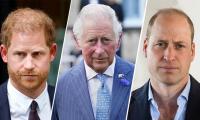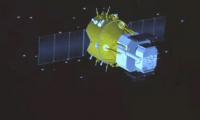At Kahuta, we were not only a team of colleagues, but all part of one family. We were all working towards one goal: to make nuclear weapons (and later, a guided missile for delivery) to defend our beloved country.
We started working on this in 1976 and were able to detonate a nuclear device by 1983. Before retiring, I decided to set up a museum in which to honour my senior colleagues. On the door was a plaque that read: “Lest you forget, we were the pioneers”. The museum has photos of all the pioneers and of the various stages of the programme.
This reminds me of a ghazal by Shad Azimabadi that was immortalised by Abida Parveen. “Dhundoge agar mulkun mulkun; milne ke nahin nayab hein ham. Tabir he jiski hasrato ghaun ae hamnafso, wo khwab hese ham lakuhn hi musafir chaltay hen. Manzil pe puhunchtay hen do ek eh ehle zamana qadr karo, nayab na hun kamiab hen ham”.(While you search for us in many countries, you will not be able to find us because we are unique. We are that dream, the meaning of which is only desire and grief. Hundreds walk towards that goal but only one or two manage to reach it. Oh you people! Respect us, we may not be unique, but we are successful.) This is a beautiful ghazal. Urdu is very poetic language – it can put an entire book into a single page.
The main benefactor of Pakistan was Quaid-e-Azam who gave Muslims a country in the Subcontinent. Shad’s verses represent him well. Mohammed Ali Jinnah fought against tremendous odds and succeeded. Although we live in an independent country, the essence of Quaid-e-Azam’s dream has not been fulfilled.
After Quaid-e-Azam, I believe Zulfikar Ali Bhutto was a key benefactor of Pakistan. Our army was defeated and the country was dismembered before his rule. Yet, he went to India with his head held high to seek the release of our prisoners of war. He managed to achieve both these aims without compromising on our stance on Kashmir. When India conducted its first nuclear test in 1974, many of us feared that India would soon strike Pakistan.
Soon after, I wrote a letter to Bhutto and suggested that we opt for a “matching response”. This was met with a positive reaction. Since the two methods of making bombs – diffusion and plutonium – were barred to us, I insisted that we use the little-known centrifuge method. Bhutto had the foresight and the determination to take the decision to see this materialise. This method had been declared viable by a British, German and Dutch consortium. It had taken them around 20 years and
investments worth around $2 billion
to prove this.
Bhutto asked me to meet him at the first possible opportunity. Our meeting took place when I visited Pakistan in December 1974 on a family visit. During this meeting, I explained the pros and cons of the method. He asked the Pakistan Atomic Energy Commission (PAEC) chairman to meet me. I requested the chairman to set up a preliminary team and research available literature.
We returned to Holland in January and came back to Pakistan on vacation in December 1975. I once again met Bhutto and he asked me to assess the progress made by the PAEC over the past year. I visited their facilities and was greatly disappointed when I discovered that nothing had been achieved.
Given all these difficulties, Bhutto tentatively suggested that I remain in Pakistan. This came as a blow to all of us as Holland was our home and I would have to officially resign from my job. Despite the fact that her elderly parents lived in Holland, my wife agreed to move to Pakistan and I was appointed as adviser to the PAEC.
It was a very difficult start – no facilities, no powers and no salary (I only received my first salary, a meagre Rs3,000, after six months). Since I could not achieve anything under these circumstances, I informed Bhutto after six months that I wanted to return to Holland as this position was a waste of time and money. He asked for some time to consider the situation and then requested A G N Kazi, Ghulam Ishaq Khan and A Shahi (who were secretary-generals) to discuss the problem. They decided that the enrichment programme should be detached from the PAEC and made into an independent project that was directly under the PM. Bhutto agreed and the three secretary-generals became members of a board of coordination to assist me. This was a wise decision that led to the success of our project. These board members proved to be indispensable. When I retired in 2001 after serving the country for 25 years, my pension was Rs4,467.
Another irreplaceable personality was Benazir Bhutto. We had started producing nuclear weapons in 1983/1984 and now needed a delivery system. I discussed the matter with the then COAS General Aslam Beg and we approached BB about it. She immediately agreed.
We decided to produce an M-11 type missile, with a range of 500 kilometres, with the consent of Admiral I A Sirohey, the then chairman of the JCSC. I was appointed chief coordinator of the Guided Missile Programme. Brigadier Saeed Beg, my civil works officer, did a wonderful job in constructing excellent facilities near Khanpur Dam within a short span of time.
Nawaz Sharif took over when BB’s government was dismissed. He refused to grant us any more funds for the project. When Benazir Bhutto returned to power once again, the matter of a long-range missile was discussed with the then COAS General A Waheed Kakar. He approached the PM in this regard and she immediately agreed, after which we managed to produce and test the Ghauri Missile. Money was later released for a shoulder-fired, anti-aircraft missile, Anza.
These are the people who meet the criteria of Shad’s ghazal: ‘Dhundoge agar mulkon mulkon, milne ke nahin nayab hein hun’.
Email: dr.a.quadeer.khan@gmail.com
Punjab, with its population of over 120 million, stands at a critical juncture in its history
Events leading up to the upcoming protests and beyond are a powerful reminder of Pakistan’s once relatively...
Efforts are alas now being made to fragment the HEC and hand over the pieces to the provinces
Pakistan’s total electricity consumption, as measured in terms of sales, has decreased to 112.9 TWh in FY2023 from...
Any progressive society or government will uphold security so that people can utilize their full potential
In Pakistan, we have witnessed erosion of public trust in government institutions







